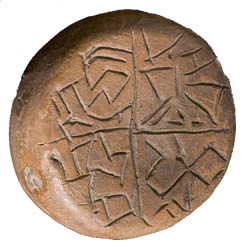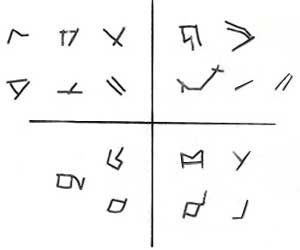


In most
cases, the writing signs are abstract and stylised geometric shapes,
arbitrary motifs, which do not offer any clues to us today, since it
is impossible to connect them to forms belonging to the real world.
Only rarely are symbols and writing representational. When they are,
however, the shapes are either reminiscent of a human figure or part
of its anatomy, or evoke a totem or sacrificial animal, a plant, or
remind us of a natural phenomenon such as the sun or a stream, delineate
a tool or allude to architectural forms or structures (for example,
a ship).
Among the 231 signs of the Balkan-Danube script, Harald Haarmann (1995) records at least 156 arbitrary or abstract ones, only 49 representing naturalistic forms with varying degrees of stylisation, and 26 intermediate ones. Since all the other archaic systems of writing have an elevated number of pictographs, then a considerable use of abstract and arbitrary signs appears to be a specific characteristic of the proto-European script
The lack of signs evoking naturalistic forms also bears witness to their high degree of evolution, notwithstanding the fact that they anticipated other known systems of writing by at least two millennia. The proto-European script seems to possess a great tendency for abstract signs, perhaps the result of a "geometric revolution" that occurred in ancient times.
